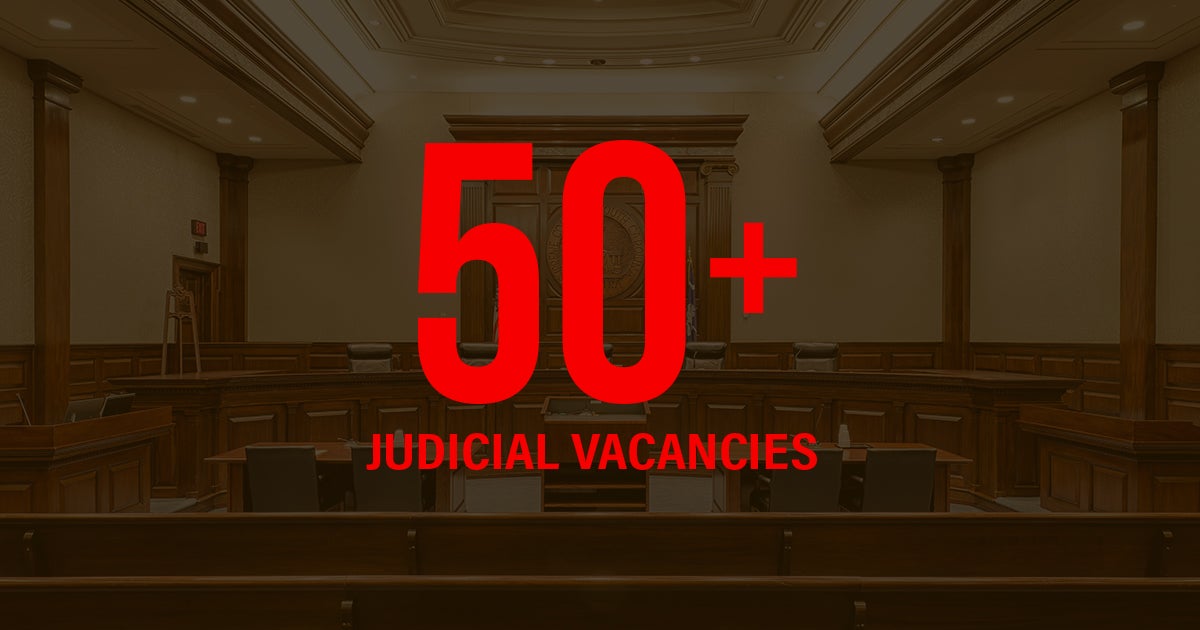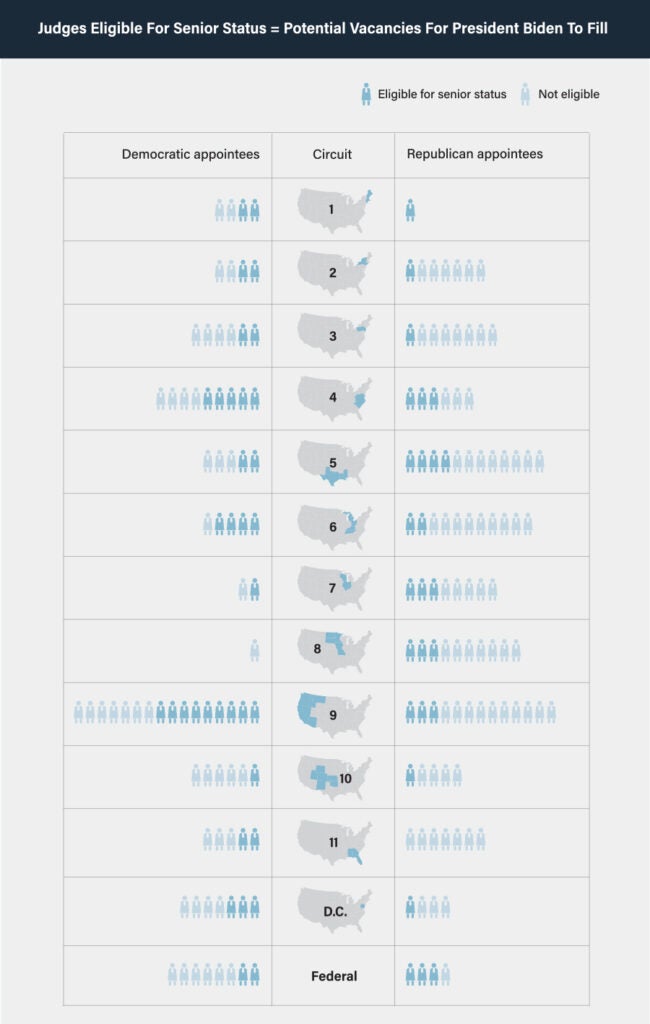
by Jorge Gomez • 5 min read
In recent weeks, there’s been a lot of discussion about adding more judges to our nation’s federal courts, starting with the possibility of packing the U.S. Supreme Court with two, four or even six more justices–whatever it takes to ensure a predictable, favorable outcome.
In fact, the president and the administration have already announced they will create a commission to explore options for “reforming” the federal courts.
Labeling it as “reform” might make it seem easier to swallow. But this term is a watered-down disguise for a dangerous scheme to stack the courts with judges partial to one side of the political spectrum, to make the judiciary an extension of whichever political party happens to be in power at the moment.
Before ballooning the size of the federal bench, let’s dive into the judicial vacancies already available right now, as well as a prospective look at what seats could open up for the president to fill in the near future.
Approximately One-Third of Circuit Court Judges Eligible to Take Senior Status
The latest update from the Administrative Office of the U.S. Courts notes there are currently less than five (5) vacancies at the federal circuit court level.
Although this is a low number of open seats, it’s possible that it could increase significantly based on how many appellate judges choose to take senior status, a type of quasi-retirement in which a judge may continue to hear cases, but their judicial seat is open and can be filled by the sitting president.
Data published earlier this month indicates that approximately one-third (33%) of all federal circuit court judges are eligible to take senior status. There are 179 total circuit court judges, and if all who are for eligible senior status do opt to retire, it would create close to sixty (60) vacancies for the president to fill.
The graph below provides an overview of the appellate courts and where these vacancies could occur:

Data and statistics courtesy of the Brookings Institution and the Washington Post.
One important pattern to highlight: A greater number of Democratic-appointed judges are eligible for senior status, compared to those who were appointed by a Republican president.
What could this mean for the composition of the courts?
If the president were to fill all of the above potential vacancies, he would be replacing a majority of judges appointed by previous presidents of his same political party, and would not replace a vast number of judges appointed by a president of the opposite party.
If you’re interested in learning more about the federal judiciary and court-packing, be sure to read these two related articles:
“What Impact Could a Biden Administration Have on America’s Federal Courts?” Read More >>
“Packing the Courts is a Serious Threat and America Needs Another Hatton W. Sumners to Speak Up.” Read More >>
50+ Open Seats at the District Court Level, Zero (0) Nominees Pending
Let’s keep in mind that assessing nominations to the circuit courts is largely based on a prospective number of seats that could become available or vacant.
However, the picture is slightly different one level below. In the district courts, there are more than fifty (50) open seats that are ready to be filled, representing about eight percent (8%) of the total number of district court seats (677).
Even though there are dozens of vacancies at the district court that need a judge imminently, it appears that things are off to a slow start on the judicial nomination front for the current administration. As of February 18, there are zero (0) nominees pending with the U.S. Senate.
Indeed, when looking at the numbers above, it’s clear the president could impact America’s federal courts right now, without having to go down the failed and treacherous road of court-packing.
As First Liberty’s legal experts have discussed at length, “court-packing” is a dangerous plan that would destroy the independence of the judiciary and threaten our foundational liberties, including religious freedom.
Because federal judges make critical legal decisions about your religious liberty, First Liberty’s team of expert continues to keep a close eye on judicial vacancies and remains committed to our work of analyzing and evaluating the records of the nominees to America’s federal courts.
And if our legal experts uncover any nominees who have a radical or unacceptable record on religious freedom, we will provide the facts and information to prevent those nominees from being on the federal bench for life.